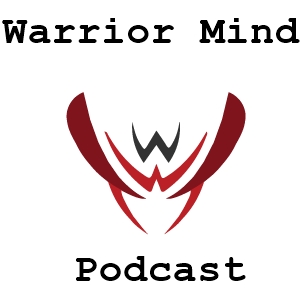The Importance of Imagery: Warrior Mind Podcast #331

Over four years and going strong! With over 500,000 downloads from over 9 countries and 5 continents’…. this is  the Warrior Mind Podcast.
the Warrior Mind Podcast.
In this episode of the Warrior Mind Podcast I’m going to talk about the importance and power of imagery for personal success and peak performance.
In many of posts on athletic performance I have talked about the importance of use the mental strength tool of imagery.
Today I’d like to discuss imagery versus doing.
As a weekend athlete, Pascual-Leone says he was curious about mental practice and sports. “Anybody who likes watching sports can see that certain athletes appear to mentally rehearse what they are about to do,” he says. “You can see it when they’re preparing for a free throw or getting ready to bomb down a slope in a ski slalom race. Before they get going, they prime themselves.”
Many famous musicians do the same thing. Vladimir Horowitz practiced mentally before concerts to avoid disturbing his motor skills; feedback from pianos other than his own Steinway was upsetting. Arthur Rubinstein, eager to enjoy life and practice as little as possible, used mental rehearsal to minimize time spent sitting at the piano.
A violinist who spent seven years in prison and practiced playing in his mind every day gave a flawless performance the night he got out of jail. Injured ballerinas have been known to lie on the floor running through dance steps with their fingers to retain their skills.
So Pascual-Leone repeated his five-finger exercise with one specific form of mental practice: internally generated motor imagery.
Enjoy this podcast this podcast on the importance of imagery.
Podcast: Play in new window | Download (12.3MB)
Subscribe: RSS
Imagery takes different forms that are important to distinguish. You know what it is like to imagine an object. Close your eyes and picture a hippopotamus. Now imagine a belly dancer. This is visual imagery. You are the spectator. Visual imagery engages parts of your brain involved in visual perception and conjures up pictorial memories of what you have seen with your eyes.
Motor or kinesthetic imagery is the process of imagining a movement. Imagine yourself erasing a blackboard, signing your name, or washing a dish. You are the actor. You perform the movement, virtually, in your mind. You aren’t using your mind’s eye so much as your mind’s body. Motor imagery engages a subset of your body mandala, including maps involved in motor planning and proprioception. It simulates the inner feeling of an action.
Using the same setup as before, Pascual-leone’s new subjects spent two hours a day five days a week imagining the five-finger piano key strokes. They were told to repeat each finger movement mentally, as if they were playing. They could rest their fingers on the keyboard but were not allowed to move them in any way.
The results were astonishing. After one week, motor imagery practice led to nearly the same level of body map reorganization as physical practice. As far as your motor cortex is concerned, executed and imagined movements are almost identical.
The “almost” is fascinating. When you mentally rehearse a movement, all but one of the brain regions that control your movements become active in the absence of movement. You imagine throwing the dart but your body is immobile. You imagine pressing the piano key but your muscles are still. So motor imagery is the off-line operation of your brain’s motor machinery unfolding as if it were happening in real time. It takes you about as long to imagine walking across your bedroom as it would if you actually did the walk. Such a walk takes longer if you imagine yourself carrying a heavy box. If you imagine yourself running, your breathing speeds up and your heart rate increases. If you imagine moving your little finger for ten minutes a day, after four weeks it will be up to one-fifth stronger.
Coaches and athletes of every skill level mustn’t ignore this. While many types of mental practice are undoubtedly helpful, motor imagery is the only technique that alters your body maps in the same way physical practice does. Visual imagery (as from a spectator’s point of view), relaxation, hypnosis, affirmation, prayer, and other techniques may help you in one way or another, but will not alter your motor maps. Remember, the students in Straub’s dart experiment who improved the most were those who carried out motor imagery.
You Can’t Improve What You Can’t Measure
The Mental Toughness Questionnaire is an assessment that determines someone’s Mental Strength…at this moment. The questionnaire also provides tips on improving your Mental Strength. You can request the Mental Toughness Assessment by going to http://MentalStrengthMastery.com
Request an Introductory Consultation right now if you wish to learn additional information on expectations, confidence and acceptance



